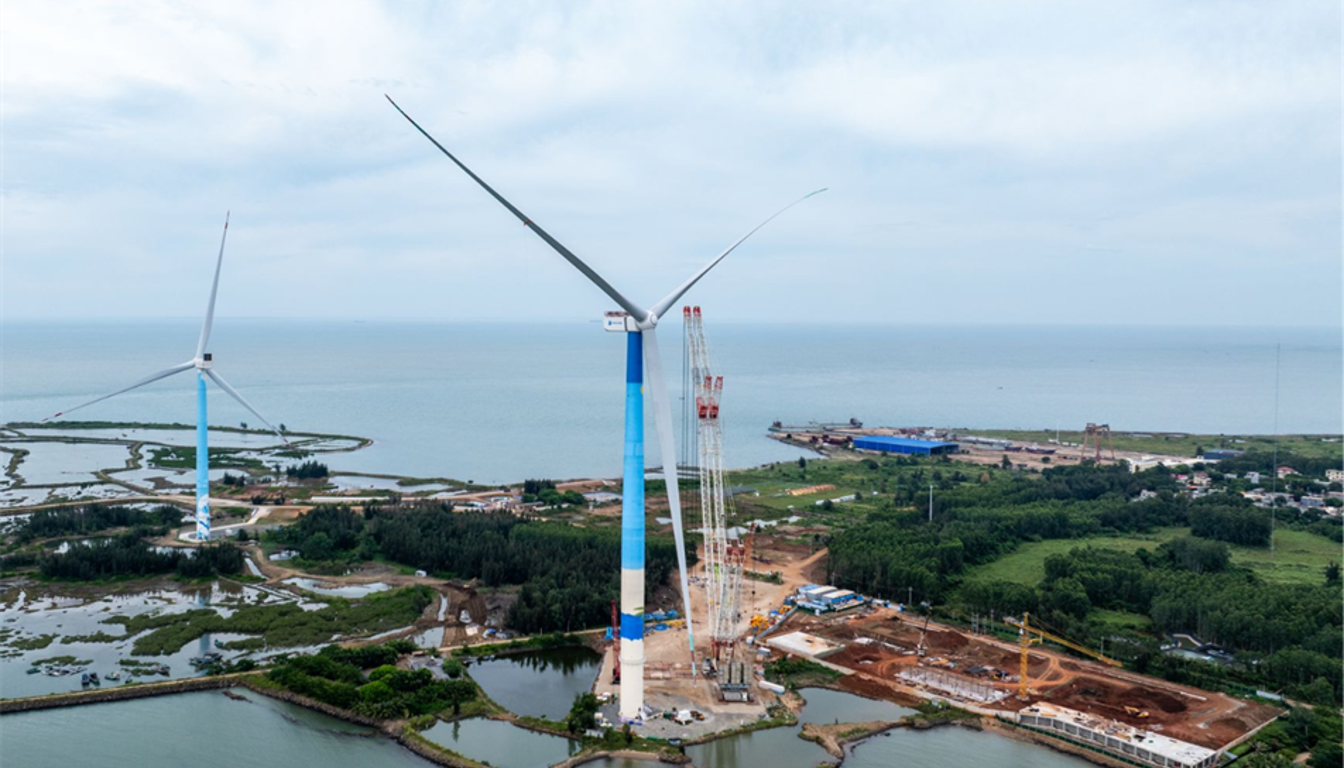The world’s largest offshore wind turbine, a massive 20-megawatt (MW) behemoth developed by Mingyang Smart Energy, has been successfully installed in China. This milestone comes as the global wind industry grapples with the complexities of turbine blade disposal.
The installation of Mingyang Smart Energy’s colossal turbine took place off China’s southeastern coast, marking a landmark achievement for the nation’s renewable energy ambitions. This cutting-edge turbine, boasting an impressive nameplate capacity of 20 MW, stands as the largest of its kind yet deployed globally. The turbine has a wind rotor diameter of 260-292 meters. With an average wind speed of 8.5m/s, it can generate 80 million kWh annually, offsetting 66,000 tons of CO₂ emissions—equivalent to the annual consumption of 96,000 homes.
While Western original equipment manufacturers (OEMs) focus on consolidation, China’s investment in expanding the scale of wind turbines speaks to its aggressive strategy in the renewable energy sector. The successful deployment of this turbine underscores China’s engineering capabilities and resourcefulness in harnessing wind power on an unprecedented scale.
But, a contrasting challenge looms large: the disposal of old or broken wind turbine blades. Opponents of wind energy have raised concerns over the environmental impact of discarded blades, which are known to consume substantial landfill space despite not exuding toxic substances.
In the United States, the Casper Regional Landfill in Wyoming serves as a notable example. Over 1,000 turbine blades have been buried at this facility, which exclusively accepts blades from within Wyoming. These blades, some extending up to 120 feet in length, are segmented into 40-foot sections before their final resting place in the landfill. According to local officials, the Casper landfill has the capacity to accommodate approximately 9,000 more blades.
Engineers predict that by 2050, turbine blade disposal will generate more than 43 million tonnes of global landfill waste, a figure nearly three times the annual waste output of New York City. The financial and spatial costs of discarding these blades are significantly higher in nations with limited land area and denser populations.
Europe offers a stark contrast to the landfill dependency seen in the US. Countries such as Germany, Austria, Finland, and the Netherlands have imposed bans on depositing turbine blades in landfills, pushing for alternative solutions. Despite these restrictions, recycling traditional turbine blades remains a formidable challenge due to their robust construction. The epoxy resin used in blade manufacturing creates durable chemical bonds, rendering them difficult to break down.
Innovatively, some decommissioned blades have found second lives as utility poles, park benches, and even infrastructure components like bridges. Another notable use involves shredding the blades for cement production. According to the American Clean Power Association, a shredded seven-ton blade can substitute for five tonnes of coal in cement furnaces, contributing to a reduction in carbon emissions.
This challenge opens up great potential for innovators looking to come up with practical, scalable solutions.
As China continues to push the boundaries of wind turbine technology with installations like Mingyang’s 20 MW giant, it also highlights the need for sustainable disposal and recycling methods globally.




